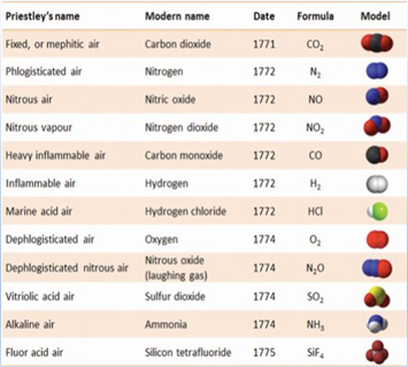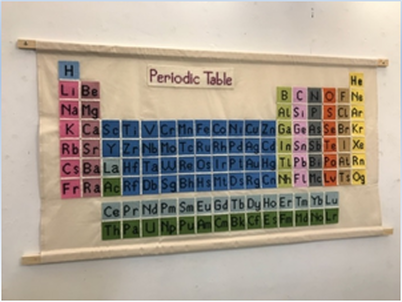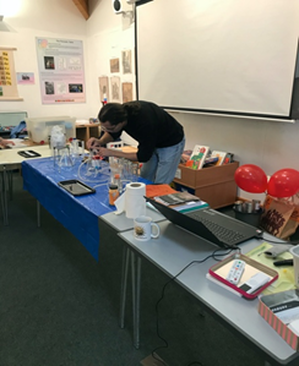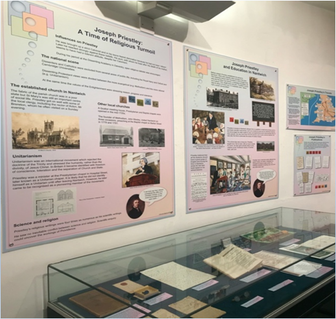Joseph Priestley’s journey of discovery – A celebratory exhibition
Most of us think of Joseph Priestley as the discoverer of oxygen, but across his life, he demonstrated much wider achievements. Had he not become a great scientist, Priestley would have been recognised and remembered as a philosopher and a pioneer of education and religious and civil liberty.
Early life
Priestley was born near Leeds, on 24 March 1733 – the eldest of six children in a family of modest means. His mother died when he was six, and Priestley was adopted by his aunt. He first revealed his interest in science at eleven, when he performed his first experiment by trapping spiders in bottles to see how long they could live without fresh air.
At nineteen, he was sent to Daventry Academy to prepare for joining the ministry. Daventry was a ‘dissenting academy’, set up for those barred from Oxford and Cambridge universities. Priestley became a ‘heterodox’ – a person who held a different religious opinion from standard beliefs and teachings of the time –and duly became a minister in 1755, appointed to Needham Market chapel in Suffolk. Many of the congregation disliked his ideas and boycotted his services, so in 1758, Priestley moved to preach at a Presbyterian chapel in Nantwich in Cheshire, where he was more welcome. Here, he found time to open a school teaching a curriculum that included science and, unusually for the time, permitted both boys and girls. He encouraged older students to carry out experiments and to demonstrate these to their parents. Whilst in Nantwich, he wrote a pioneering book on English grammar, earning enough to buy scientific equipment for his experiments, such as a small air pump and an electric machine. He taught his more senior pupils in to use the instruments themselves and maintain them.
In 1761, Priestley was appointed to Warrington Academy, where he married Mary in 1762, and had four children. He established his scientific reputation by publishing a treatise on electricity. Six years later, he moved to Leeds for five years, continuing with his science and ministry.
Early life
Priestley was born near Leeds, on 24 March 1733 – the eldest of six children in a family of modest means. His mother died when he was six, and Priestley was adopted by his aunt. He first revealed his interest in science at eleven, when he performed his first experiment by trapping spiders in bottles to see how long they could live without fresh air.
At nineteen, he was sent to Daventry Academy to prepare for joining the ministry. Daventry was a ‘dissenting academy’, set up for those barred from Oxford and Cambridge universities. Priestley became a ‘heterodox’ – a person who held a different religious opinion from standard beliefs and teachings of the time –and duly became a minister in 1755, appointed to Needham Market chapel in Suffolk. Many of the congregation disliked his ideas and boycotted his services, so in 1758, Priestley moved to preach at a Presbyterian chapel in Nantwich in Cheshire, where he was more welcome. Here, he found time to open a school teaching a curriculum that included science and, unusually for the time, permitted both boys and girls. He encouraged older students to carry out experiments and to demonstrate these to their parents. Whilst in Nantwich, he wrote a pioneering book on English grammar, earning enough to buy scientific equipment for his experiments, such as a small air pump and an electric machine. He taught his more senior pupils in to use the instruments themselves and maintain them.
In 1761, Priestley was appointed to Warrington Academy, where he married Mary in 1762, and had four children. He established his scientific reputation by publishing a treatise on electricity. Six years later, he moved to Leeds for five years, continuing with his science and ministry.
|
Major discoveries
It was in Leeds where he investigated carbon dioxide and the carbonation of water. He later went on to explore the composition of water, the mechanism of photosynthesis and respiration, and investigated no fewer than 12 distinct gases, including oxygen. This prompted Humphry Davy to say, “No other person ever discovered so many new and curious substances”. Moving to Calne in Wiltshire, he worked under the patronage of Lord Shelburne 1772-1780, when many of his important scientific discoveries were formulated. Indeed, it was in 1774 that, whilst heating mercury calx (red oxide of mercury) in a glass tube using a burning glass to focus sunlight, he discovered ‘dephlogisticated air’. The Theory of Phlogiston originated in 1669, and argued that a metal consisted of an inflammable ‘phlogiston’ and ‘calx’, or ash. In Priestley’s experiment, the mercury calx was assumed to be pure mercury metal, and thus heating it meant that phlogiston was taken from the surrounding air in the tube, thereby leaving ‘dephlogisticated air’. This led to six volumes on Experiments and Observations on Different Kinds of Air (1774–86). Later in 1774, while touring Europe with Shelburne, Priestley described his discovery of ‘dephlogisticated air’ to the French chemist Antione Lavoisier. Lavoisier found that Priestley’s ‘dephlogisticated air’ would react with metal to form calx. Three years of experimentation later, Lavoisier renamed the gas as oxygen and published his experiments, forming the basis of what we now know as oxidation and reduction, and finally putting the Phlogiston Theory to rest. Later life In 1780, Priestley became a minister in Birmingham, where he stayed for 11 years. He joined the Lunar Society and, alongside fellow Lunar Men such as Erasmus Darwin, James Watt, Matthew Boulton and Josiah Wedgwood, changed the face of 18th century England with their debates encompassing philosophy, arts, science and their individual achievements; building canals, factories and managing international businesses. However, resentment towards religious dissenters was building, culminating in the 1791 Birmingham Riots (aka the Priestley Riots!). Priestley and his family fled to safety before their home was ransacked and burnt down. His library, scientific equipment, and papers were destroyed. Priestley, feeling increasingly unsafe, emigrated to America in 1794. He continued his scientific work there, dying in Northumberland, Pennsylvania, in 1804. From Nantwich to Oxygen: a Journey of Discovery From 14th August until 26th October 2019, Nantwich Museum ran a successful temporary exhibition celebrating Priestley’s time there, to honour his life and works. It coincided with the International Year of the Periodic Table celebrations, marking the 150th anniversary of the Mendeleev periodic table. A number of groups within the Royal Society of Chemistry supported the exhibition. Priestley once said, “…at Nantwich, I found a good-natured, friendly people, with whom I lived three years very happily”. The school he established continued for over 80 years after he left, welcoming 30 boys and six girls from ‘dissenting families’. Priestley worked at the school for six days each week, 7am-4pm, with an hour for dinner. We have much more than Priestley’s enduring brilliance at chemistry to admire and thank him for. |
|
Further reading
Schofield, Robert E., The Enlightenment of Joseph Priestley: A Study of his Life and Work from 1733 to 1773., University Park: Pennsylvania State University Press, 1997.
Schofield, Robert E., The Enlightened Joseph Priestley: A Study of His Life and Work from 1773 to 1804., University Park: Pennsylvania State University Press, 2004.
Schofield, Robert E., The Enlightenment of Joseph Priestley: A Study of his Life and Work from 1733 to 1773., University Park: Pennsylvania State University Press, 1997.
Schofield, Robert E., The Enlightened Joseph Priestley: A Study of His Life and Work from 1773 to 1804., University Park: Pennsylvania State University Press, 2004.





